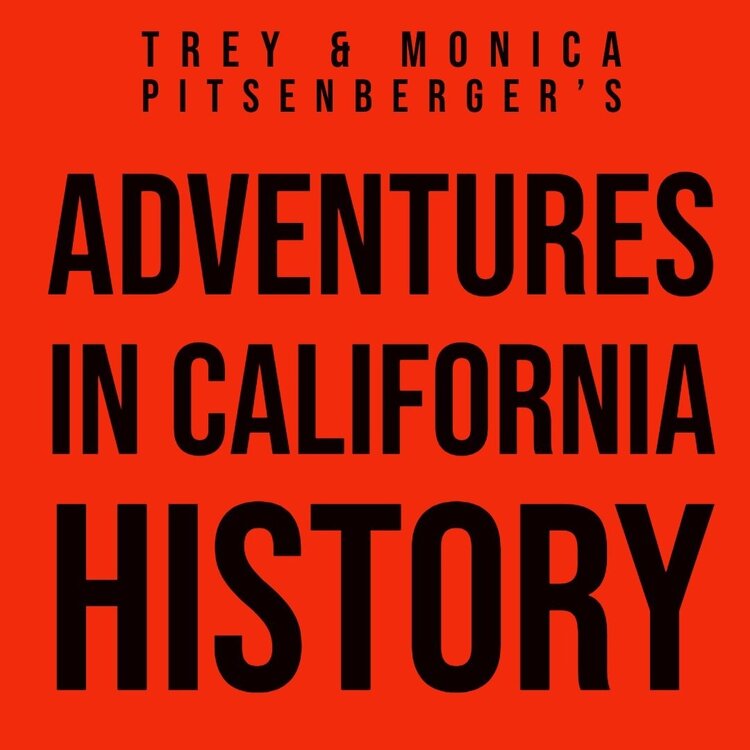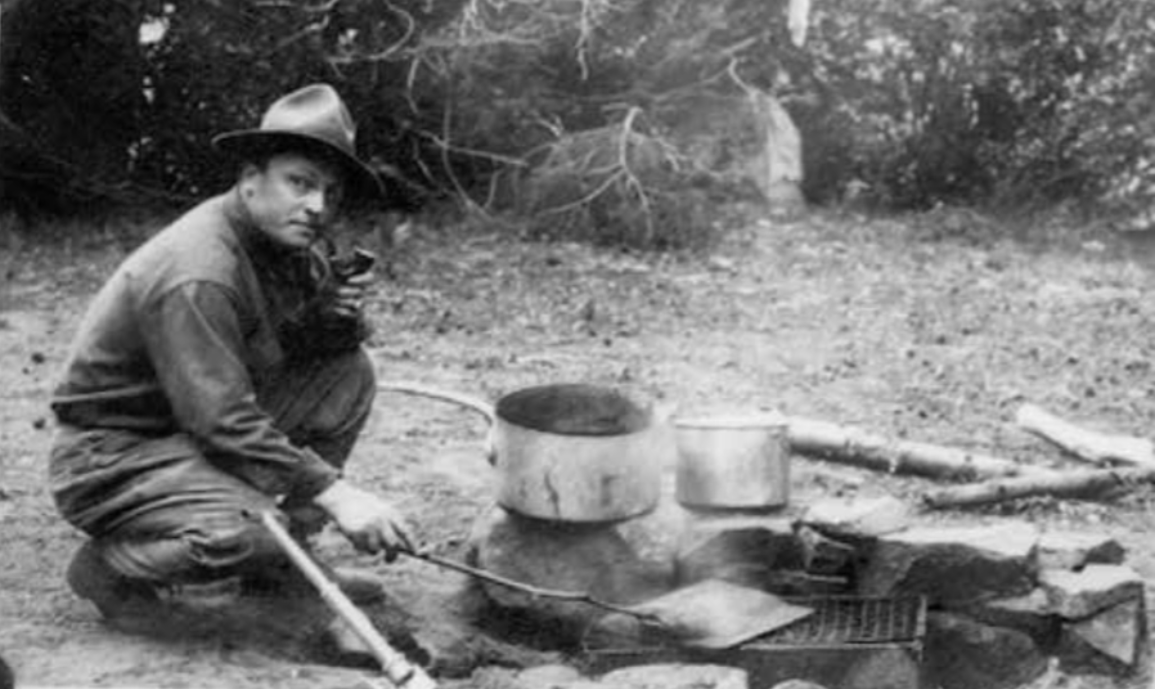Entering the State of California via the Lincoln Highway meant you had two choices to make in Reno. Take the northern route up and over Donner Pass, or take the southern route pass Lake Tahoe and over the summit at Johnson's Pass. Either option meant a challenging climb, which was brutal for both people and machines. What was needed was a place to rest, body, and engine while picking up supplies to keep both on the road.
PG&E lookout which T.C.. added to create his canteen. Notice the Lincoln Highway sign.
Theodore Clemens Wohlbrück (1879–1936), known as "T.C." Wohlbrück, was a photographer who arrived in California in 1912 from Massachusetts after getting a divorce in Reno. He made his living by traveling around the state in his automobile, taking school class pictures. Wohlbrück noticed how important the car was becoming in everyday life. The motors of that time were a bit unreliable and needed regular oil and water top offs and gasoline to keep moving on the road.
T.C. was an entrepreneur. He saw a need and decided to address it with a business. His idea was to provide these services and food, trinkets, and rooms for rent. Long before the mini-mart gas stations, we see today T.C. decided to build what he called a "Lookout" and "Canteen Service Station" at Emigrant Gap along the Lincoln Highways northern route. At this time, he had also envisioned another canteen at the Donner Memorial, dedicated in 1918, but that project would come later.
The view is looking west towards the lookout. Eventually, this would become the site of the famous Nyack Lodge.
Pacific Gas & Electric (P.G.&E) had built a small "lookout" at the Emigrant Gap, the historic "gap" in the mountains where the early pioneers had crossed over the spine of mountains and down to Bear Valley. The power company had built the lookout so travelers could stop and take in the fantastic view and watch the construction going on in the distance of the enlarging of Spaulding Dam. However, the lookout site was not occupied and frequently vandalized, so T.C. offered P.G.&E a deal. He would build his first "Canteen" there while maintaining the spot's integrity and preventing further damage. This lookout, completed in 1919, included an additional 100 acres that Wohlbrück had purchased from a man named Allen, to prevent anyone else from opening up a competing business, which he had heard was in the works.
TCs “Echo Summit Lookout” on Johnson Pass Road.
Wohlbrück built his second canteen on the Lincoln Highway's southern route at Echo Summit on Johnson's Pass. This canteen also had spectacular views which could be seen out back on the deck. A spyglass for travelers to take in the scenery was available, and postcards with Wohlbrücks photos of the region were for sale.
The Echo Summit canteen still exists as the Alpine Club Lodgehouse and even includes some of TCs handmade furniture. The color photo shows the lodge as it is today. It still has a Lincoln Highway sign!
Echo Summit Lodge today.
Wohlbrück's third canteen was near the recently completed Donner Pioneer Memorial in Truckee, just east of Donner Lake. Before the park existed, the monument sat by itself with people removing the rocks at the base as souvenirs. Wohlbrück saw an opportunity and leased the land from the Native Sons of the Golden West, who owned the property. He offered to protect the monument while servicing travelers with his canteen service station. Visitors had been removing rocks around the base of the statue, so he put a cap of concrete around it.
The view of the Donner Memorial from the Lincoln Highway. Photo from Donner Summit Historical Society, Norm Sayler collection.
Wohlbrück was an avid collector of memorabilia as well as automobiles. In 1930 he presented his collection to the Horse and Auto Museum in Redwood City. Soon the collection outgrew that space, and he moved it to San Jose in 1936. It never opened to the public. Wohlbrück asked the State of California if they would build a museum to house his priceless collection of horse-drawn vehicles, automobiles, and antiques, but they declined.
Four days before his death on November 28th, 1936, he agreed with the Henry Ford Museum in Dearborn, Michigan, to sell them his collection. The collection included 152 carriages, coaches, and wagons, 60 motorcars, including the 1913 Mercedes used by Crown Prince Wilhelm of Germany used on the eastern front during World War I, the family carriage of Leyland Stanford, and the hunting wagon of Mark Hopkins.
TC Wohlbrück was a man ahead of his time and an essential part of the history of transportation over the Sierra Nevada.
Although very difficult to locate in this photo, there two Signal gas pumps located in the background that State Parks didn’t realize existed. Located on the highway between the small shrub in center of the photo and the tress to right is a Lincoln Highway concrete marker post.
Thanks to Norm Sayler, of the Donner Summit Historical Society, for keeping the memory of TC alive. It was Norm that said there was a fascinating story to be told, and he was right. Photos are from Norm’s collection.












